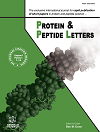-
s Phosphorylation Regulation of a Histone-like HU Protein from Deinococcus radiodurans
- Source: Protein and Peptide Letters, Volume 29, Issue 10, Oct 2022, p. 891 - 899
-
- 01 Oct 2022
Abstract
Background: Histone-like proteins are small molecular weight DNA-binding proteins that are widely distributed in prokaryotes. These proteins have multiple functions in cellular structures and processes, including the morphological stability of the nucleoid, DNA compactness, DNA replication, and DNA repair. Deinococcus radiodurans, an extremophilic microorganism, has extraordinary DNA repair capability and encodes an essential histone-like protein, DrHU. Objective: We aim to investigate the phosphorylation regulation role of a histone-like HU protein from Deinococcus radiodurans. Methods: LC-MS/MS analysis was used to determine the phosphorylation site of endogenous DrHU. The predicted structure of DrHU-DNA was obtained from homology modeling (Swissmodel) using Staphylococcus aureus HU-DNA structure (PDB ID: 4QJU) as the starting model. Two types of mutant proteins T37E and T37A were generated to explore their DNA binding affinity. Complemented-knockout strategy was used to generate the ΔDrHU/pk-T37A and ΔDrHU/pk-T37E strains for growth curves and phenotypical analyses. Results and Discussion: The phosphorylation site Thr37, which is present in most bacterial HU proteins, is located at the putative protein-DNA interaction interface of DrHU. Compared to the wild-type protein, one in which this threonine is replaced by glutamate to mimic a permanent state of phosphorylation (T37E) showed enhanced double-stranded DNA binding but a weakened protective effect against hydroxyl radical cleavage. Complementation of T37E in a DrHU-knockout strain caused growth defects and sensitized the cells to UV radiation and oxidative stress. Conclusions: Phosphorylation modulates the DNA-binding capabilities of the histone-like HU protein from D. radiodurans, which contributes to the environmental adaptation of this organism.


